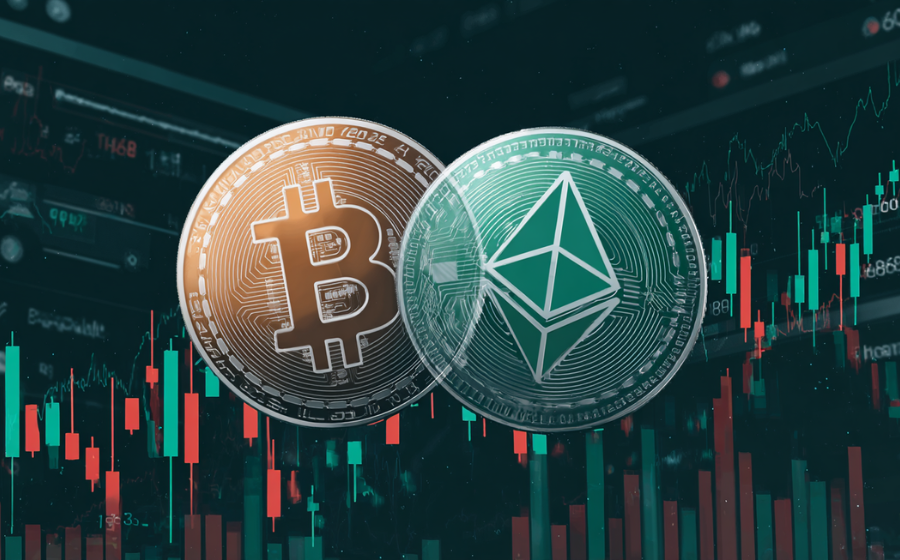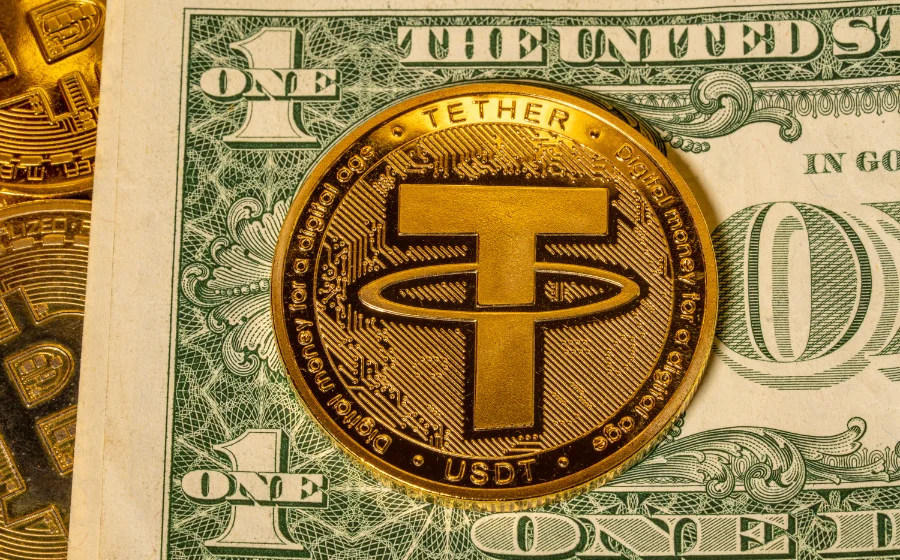
KEYTAKEAWAYS
- Crypto Market Cap reflects the overall size of the crypto industry and helps investors compare it with other financial markets.
- While useful, market cap can be misleading due to inaccurate data, artificial manipulation, or short-term volatility.
- It should be viewed as one of many indicators, complemented by deeper research and analysis before making investment decisions.

CONTENT
Crypto Market Cap measures the total value of cryptocurrencies. Learn its importance, limits, and why relying solely on it can be misleading for financial decisions.

WHAT IS CRYPTO MARKET CAP?
Market value, often referred to as Crypto Market Cap, represents the current market value of a cryptocurrency network. It is calculated by multiplying the circulating supply of an asset by its unit price.
✏️ Market Cap = Circulating Supply × Price
📌The Meaning of Total Crypto Market Cap
The total Crypto Market Cap reflects the combined value of Bitcoin, altcoins, stablecoins, tokens, and all other crypto assets in circulation. Many consider it a crucial indicator because it demonstrates the overall scale of the entire industry.
📌 Historical Changes in Crypto Market Cap
Due to the high volatility of the crypto market, the Crypto Market Cap often undergoes significant fluctuations. During the first six and a half years of Bitcoin’s existence, the total market cap never exceeded $20 billion. By 2018, it reached a peak of $770 billion and has since moved within the range of several hundred billion dollars.
>>> More to read: Limit Price vs Market Price | Crypto Trading Basics You Must Know
CRYPTO MARKET CAP CATEGORIES
Just like in the traditional stock market, cryptocurrencies can also be classified by their market capitalization. Based on Crypto Market Cap, coins are typically grouped into “large-cap,” “mid-cap,” and “small-cap.”
✅ Large-Cap Coins (Market Cap over $10 billion)
Large-cap coins represent the backbone of the crypto market. With significant capitalization and strong consensus, they are considered relatively safer investments. Even during periods of extreme volatility, their high market cap provides stability.
Historically, only a handful of assets consistently remain in this category, such as Bitcoin (BTC), Ethereum (ETH), and Ripple (XRP).
✅ Mid-Cap Coins (Market Cap between $1 billion – $10 billion)
Mid-cap coins carry higher volatility compared to large-cap assets. Their ecosystems and consensus are still developing, which makes them riskier but also more flexible in terms of potential growth.
Examples of mid-cap coins include Litecoin (LTC), Polkadot (DOT), and stablecoins like Tether (USDT).
✅ Small-Cap Coins (Market Cap under $1 billion)
Small-cap coins typically consist of emerging projects or high-risk altcoins. Their limited market size often means lower liquidity and higher price sensitivity, making them more vulnerable to market swings.
However, small-cap assets sometimes produce “hidden gems” that can deliver outsized returns during favorable market cycles.
>>> More to read: Why Is Blockchain So Secure? A Deep Dive
CRYPTO MARKET CAP ADVANTAGES & LIMITATIONS
When analyzing the crypto market, Crypto Market Cap is one of the most widely used indicators. It serves as a quick reference for evaluating projects, but it is also a double-edged sword—offering clear advantages while carrying certain limitations.
🚩 Advantages of Market Cap
- Quick Comparison of Project Size
Crypto Market Cap is often seen as the “leaderboard” of the market. A higher market cap indicates stronger influence and recognition, while a lower-cap project is usually in its early stage, carrying both risks and opportunities.
- Liquidity and Stability Reference
Large-cap assets generally enjoy better liquidity on exchanges, with active trading, tighter spreads, and less susceptibility to pump-and-dump manipulation. This makes them more stable compared to smaller projects.
- Basis for Portfolio Allocation
Many investors rely on Crypto Market Cap when allocating portfolios—for example, putting part of their funds into large-cap coins for stability, while diversifying into small-cap coins in search of higher potential returns.
🔍 Limitations of Market Cap
- No Direct Link Between Price and Market Cap
A higher coin price does not always mean a larger market cap. For instance, a coin priced at $1,000 with very limited supply may still have a smaller market cap than a coin priced at $100 but with a massive circulating supply.
- Supply Expansion Risks
Some tokens have significant future unlock schedules, meaning today’s Crypto Market Cap might not reflect their long-term valuation. This is why investors also need to look at the “Fully Diluted Valuation” (FDV) to get a more accurate picture of potential risks.
>>> More to read: What is FDV in Crypto?
WHY IS THE TOTAL CRYPTO MARKET CAP IMPORTANT?
The combined Crypto Market Cap is often used as a benchmark to compare the crypto industry with broader financial markets. Analysts, for instance, frequently place it alongside:
- 📊 The market value of precious metals like gold and silver
- 📈 Equity markets, such as the S&P 500 or global stock indices
- 💱 Other asset classes, including forex or commodities
Through such comparisons, they attempt to project how the crypto market could evolve over the next few years—or even decades.
❗ The Limits of Market Cap Comparisons
That said, there is no perfect way to measure the true value of cryptocurrencies or blockchain projects. While comparisons can be insightful, they should not be taken as absolute indicators. Different markets attract different types of investors, and equity, forex, or commodity traders do not automatically shift to crypto. Instead, cryptocurrencies should be seen as a rapidly emerging asset class that requires rational evaluation rather than blind expectation.
>>> More to read: What is Slippage? The Hidden Cost in Crypto Trading
WHY CAN THE TOTAL CRYPTO MARKET CAP BE MISLEADING?
Relying solely on the total Crypto Market Cap for financial decisions can be misleading for several reasons:
- Data accuracy issues – Market cap is calculated by multiplying circulating supply with price. If supply data is inaccurate or inflated, the resulting valuation will also be unreliable.
- Manipulated figures – Some projects artificially boost their market cap to appear safer or more valuable than they really are. Focusing only on market cap without understanding fundamentals can lead to poor investment decisions.
- Snapshot in time – The total Crypto Market Cap only reflects a momentary state of the market. It may be a nine-digit number today, ten digits next week, and back to eight within months. It serves as a snapshot, not a definitive measure of long-term value.
In short, while Crypto Market Cap provides a useful overview of the industry’s scale, it should not be treated as the sole basis for evaluating projects or making financial decisions.
>>> More to read: What is Slippage? The Hidden Cost in Crypto Trading
CRYPTO MARKET CAP CONCLUSION
Crypto Market Cap remains one of the most important indicators to watch, as it reflects the fluctuations in the overall valuation of the cryptocurrency industry. Differentiating between the reported market cap today and the potential diluted market cap in the future can also provide valuable insights.
At the same time, it should never be the only metric considered. Crypto Market Cap is just one piece of the broader puzzle. Before making any financial decision, it is essential to examine other indicators and conduct deeper research into the industry.
CRYPTO MARKET CAP FAQ
Q1: Does a higher coin price always mean a larger market cap?
Not necessarily. Some coins may trade at $1,000 but have very limited circulating supply, resulting in a relatively small Crypto Market Cap. Meanwhile, a coin priced at $100 with a much larger circulating supply could have a higher market cap. The formula is simple: Price × Circulating Supply.
Q2: Is Fully Diluted Valuation (FDV) important?
Yes. FDV represents the theoretical total valuation if all tokens were released into circulation. For projects with large token lock-ups or linear vesting schedules, FDV helps investors assess whether there may be significant changes in future valuation compared to today’s Crypto Market Cap.
Q3: Are large-cap cryptocurrencies always safer?
Not entirely. While large-cap assets like Bitcoin (BTC) and Ethereum (ETH) generally have stronger liquidity and lower volatility, they are still exposed to risks such as regulatory shifts or sudden market shocks that can trigger sharp price movements.
Q4: Can market cap be manipulated?
Yes. Smaller-cap coins with low trading volume are especially vulnerable to manipulation. “Whales” or coordinated groups can artificially pump and then dump these assets, making them far riskier compared to higher-cap cryptocurrencies.

















